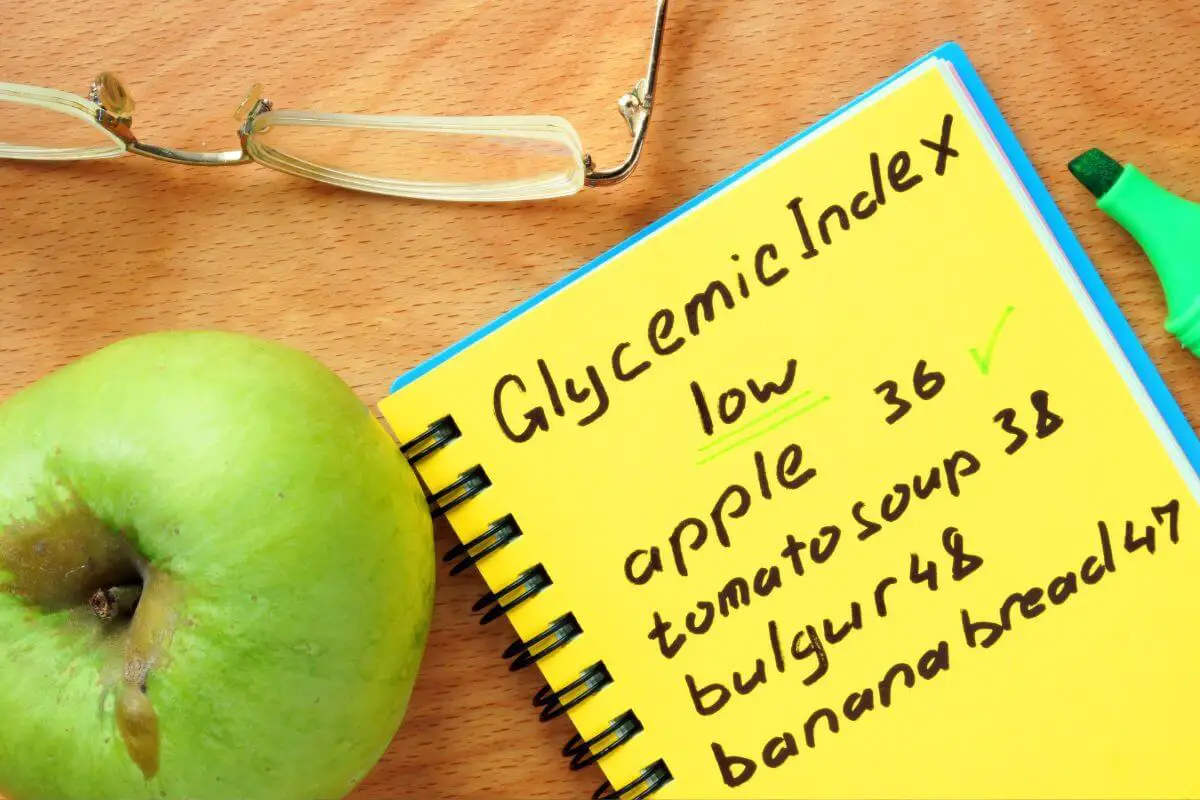Why A Low-glycemic Index Diet Can Be Beneficial For Diabetics?

A low-glycemic index (GI) diet is a popular dietary recommendation for individuals with diabetes. This diet encourages consuming foods with low GI value, meaning they don’t cause a rapid increase in blood sugar levels. Healthcare influencers advocate for this type of diet as it can help individuals with diabetes to manage their blood sugar levels, improve insulin sensitivity, reduce inflammation, and lower the risk of cardiovascular diseases.
By consuming low GI foods, diabetics can have more stable blood sugar levels, preventing highs and lows that can significantly impact their overall health and well-being. This article explores the benefits of a low-GI diet for diabetics, meal planning, and potential risks.
Diabetics can benefit from eating a diet low on the glycemic index.
1. Understanding Diabetes and its Impact on Blood Sugar Levels
In diabetes, the body either does not produce enough insulin or cannot use it effectively, leading to high blood sugar levels.
Insulin is a hormone produced by the pancreas that helps transport glucose from the blood to the cells for energy. When insulin is insufficient or not working correctly, glucose accumulates in the blood, leading to hyperglycemia.
Over time, high blood sugar levels can damage vital organs and cause long-term complications such as nerve damage, kidney disease, and blindness.
2. What is Glycemic Index (GI), and How does it Affect Blood Sugar
The glycemic file (GI) is a proportion of how rapidly food sources containing carbs raise glucose levels.
Foods with a high GI value (70 or above) cause a rapid spike in blood sugar levels, while those with a low GI value (55 or below) release glucose more gradually, resulting in a slower rise in blood sugar levels.
The GI of a food depends on various factors, such as the type of carbohydrate, fiber, fat, and protein content, as well as how the food is prepared and cooked.
3. Benefits of a Low-Glycemic Index Diet for Diabetics
A low-glycemic index (GI) diet can offer numerous benefits for individuals with diabetes. Here are some of the critical benefits of a low GI diet for diabetics:
- Improves Insulin Sensitivity: A low GI diet can improve insulin sensitivity, which is particularly important for individuals with type 2 diabetes.
- Reduces Inflammation: Low GI foods are often high in fiber and nutrients, which can help reduce inflammation in the body, reducing the risk of chronic health problems.
- Lowers Risk of Cardiovascular Disease: By consuming low GI foods, individuals can lower their risk of cardiovascular diseases, which are common complications of diabetes.
- Helps Maintain a Healthy Weight: Low GI foods tend to be filling and satisfying, making it easier to maintain a healthy weight, which is essential for individuals with diabetes.
4. Foods varieties with Low GI and High Nutritional Value
A low glycemic index (GI) diet can help regulate blood sugar levels, but focusing on consuming foods with high nutritional value is essential.
Here are some other foods with a low GI value and high nutritional value that people with diabetes can incorporate into their diet:
- Whole Grains: Whole-grain bread, brown rice, quinoa, and oatmeal are all excellent choices for a low-GI diet. These food varieties are plentiful in fiber, nutrients, and minerals.
- Non-Starchy Vegetables: Vegetables such as broccoli, spinach, carrots, and tomatoes are low in calories and have a low GI value. They are also rich in fiber, antioxidants, and other essential nutrients.
- Leafy Greens: Leafy greens such as spinach, kale, and collard greens have a meager GI value and are packed with vitamins and minerals.
- Legumes: Lentils, chickpeas, and black beans are excellent sources of protein, fiber, and other essential nutrients. They have a low GI value and can help regulate blood sugar levels.
- Fruits: Most fruits have a moderate to high GI value, but some, such as berries, apples, and oranges, are lower in GI and offer a wealth of vitamins, minerals, and fiber.
5. Meal Planning and Recipes for Low-GI Diet
When planning meals for a low-GI diet, choosing nutrient-dense foods with a low GI value is essential.
Here are some tips and recipe ideas for a low-GI meal plan:
✓ Breakfast: Choose whole-grain bread or cereals, such as oatmeal, as a base. Add protein-rich foods, such as eggs or Greek yogurt, and pair them with low-GI fruits like berries or apples.
✓ Lunch: Opt for a salad with leafy greens, non-starchy vegetables, and a lean protein source, such as grilled chicken or tofu. Use a low-GI dressing like a vinaigrette made with olive oil and vinegar.
✓ Dinner: Choose a lean protein source, such as grilled fish or chicken, and pair it with non-starchy vegetables, such as broccoli or asparagus. Serve with a whole-grain side, such as brown rice or quinoa.
✓ Snacks: Choose nutrient-dense snacks, such as unsalted nuts or sliced vegetables with hummus.
Recipe idea
Grilled salmon with roasted sweet potato and asparagus. Marinate salmon in olive oil, lemon juice, garlic, and herbs. Roast sweet potato and asparagus with olive oil, salt, and pepper. Present with a side of quinoa or brown rice.
6. Incorporating Physical Activity with Low-GI Diet for Better Diabetes Management
Incorporating physical activity along with a low-GI diet can be an effective way to manage diabetes. Here are some tips for combining exercise and a low-GI diet for better diabetes management:
- Plan Meals and Exercise: Plan meals and exercise around each other to maintain consistent blood sugar levels. Eat a low-GI meal or snack before exercise to provide energy and prevent low blood sugar.
- Choose Activities you Enjoy: Find physical activities and make them a part of your routine. It can help you stick to a regular exercise routine and make it more enjoyable.
- Mix it Up: Varying exercise routines can prevent boredom and increase the overall benefits of physical activity. Try different activities, such as swimming, yoga, or cycling.
- Monitor Blood Sugar Levels: Keep track of blood sugar levels during and after exercise, and adjust food intake and medication as needed.
7. Risks and Challenges of Low-GI Diet for Diabetics
A low GI diet can be a helpful tool in managing diabetes, but it’s essential to be aware of its potential risks and challenges. Some of these include:
- Nutritional Imbalance: Strictly following a low GI diet can lead to a lack of variety in food choices and potential nutrient deficiencies.
- Difficulty in Meal Planning: Creating balanced, low GI meals can be challenging and time-consuming.
- Limited Food Choices: Many high GI foods, such as sugary snacks and refined carbohydrates, may need to be avoided or limited on a low GI diet.
- Potential for Weight Gain: Some low GI foods can be high in calories, which could lead to weight gain if not consumed in moderation.
Conclusion
In conclusion, a low-glycemic index diet is a promising strategy for managing blood sugar levels in individuals with diabetes. However, further research is needed to understand its long-term effects and potential benefits fully. Healthcare professionals should work with individuals with diabetes to determine if a low-GI diet is appropriate and provide ongoing support and guidance. Ultimately, a low-GI diet can be essential for improving diabetes management and reducing the risk of related complications.






